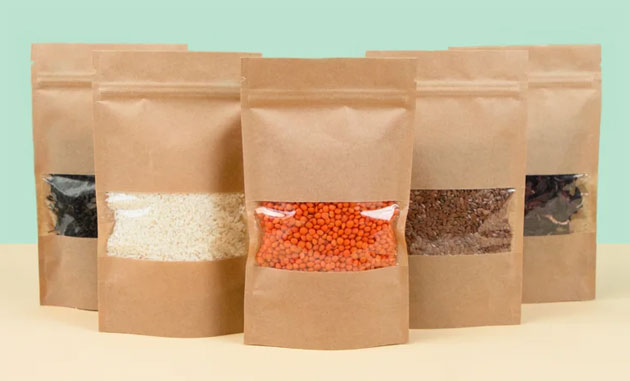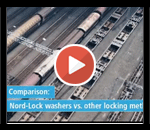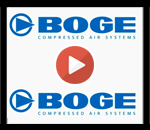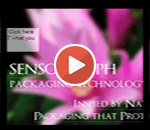The evolution of Flexible Packaging Paper in a Changing World
 In today’s paced society, the role of packaging is extremely important in preserving and delivering products while also minimizing harm to the environment.
In today’s paced society, the role of packaging is extremely important in preserving and delivering products while also minimizing harm to the environment.
As both consumers and manufacturers become more environmentally conscious, there is a growing demand for packaging solutions that are sustainable. One interesting response to this demand is packaging paper, which is a versatile material that can be easily moulded and shaped to fit various products.
This makes it an excellent choice for manufacturers who want to create visually appealing packaging designs. Recent statistics indicate that 75% of consumers are willing to pay more for products that’re sustainable. So let’s explore the evolving world of flexible packaging paper including its current trends and potential, for growth.
What is flexible packaging paper and its types?
Flexible packaging paper is a material that offers both efficiency and cost effectiveness when it comes to packaging products. It is crafted using materials such as polyethylene, polypropylene and polyester. The adaptability of this material enables its use, in applications spanning from food packaging to medical packaging. Polyethylene is a used and favoured material for flexible packaging paper because of its exceptional ability to prevent moisture penetration. It is commonly employed in fields including food packaging, medical packaging and consumer goods packaging.
In contrast, polypropylene is renowned for its tensile strength and durability. It finds its applications in heavy duty packaging scenarios such as packaging and shipping sacks.
Polyester on the hand offers versatility as a type of flexible packaging paper with attributes like high clarity, dimensional stability and excellent printability. Its usage spans, across domains including snack packaging, pet food packaging and pharmaceutical packaging.
Advantages of Flexible Packaging Paper
Flexible packaging paper offers several benefits compared to conventional packaging materials. One significant advantage is its capacity to safeguard products from elements like moisture, light and air. Consequently, it becomes an option for preserving product freshness and preventing contamination.
Firstly, the lightweight nature of packaging paper makes it convenient to transport and store. This not helps in reducing shipping costs but also makes it more manageable for consumers to handle the products. Secondly, it offers cost effectiveness by requiring material to produce the same amount of packaging compared to alternative materials. Lastly, flexible packaging paper is beneficial for the environment as it can be recycled and is biodegradable.
In addition to these advantages flexible packaging paper offers levels of customization. It can be printed with top notch graphics and designs making it an excellent choice for branding and marketing purposes. Its flexibility enables it to adapt to shapes and sizes effectively making it suitable, for a wide range of products.
Applications of Flexible Packaging Paper
Flexible packaging paper is a versatile material that finds its use in various applications, including from food packaging and medical supplies.
Flexible packaging paper is widely utilized in the food industry to package items like snacks, bakery products and frozen foods. Its lightweight nature. facilitates transportation while its barrier properties play a vital role in preserving the freshness of food and preventing contamination. Similarly, in the sector flexible packaging paper is employed to package bandages, surgical instruments and medical devices. Its ability to ensure sterility and protect against moisture and other impurities is crucial for maintaining safety. Moreover, the consumer goods industry also relies on packaging paper for products such as cosmetics, toiletries and pet food. Its cost effectiveness and eco friendliness make it an appealing choice, for companies aiming to reduce their impact.
Current trends in Flexible Packaging Paper
Flexible packaging paper is constantly evolving due to advancements. There are exciting trends and innovations happening in this field currently:
Advanced Coatings: One of the developments in the flexible packaging paper sector is the adoption of innovative coatings, including liquids and perishables. These coatings play a role, in enhancing packaging performance by boosting its resistance to moisture and other environmental elements. Moreover, they also contribute to printing surfaces resulting in visually appealing graphics and improved branding for various products.
Development of new materials: Manufacturers are continuously seeking methods to enhance the sustainability and eco friendliness of their packaging materials. As a result, they have made progress in creating materials, like biodegradable films and laminates derived from renewable resources. These innovative materials not contribute to reducing environmental harm but also deliver enhanced functionality and durability when compared to conventional packaging options.
E-commerce and Convenience Packaging: The surge in online shopping has created a need for packaging that is both convenient and lightweight making flexible packaging paper an excellent choice. With forecasts predicting that 20.1% of transactions will occur online by 2023 it comes as no surprise that e-commerce sales are projected to experience significant growth as well with an anticipated increase of 11%, in the same year.
Digital Printing: Digital printing have opened up new possibilities for customizing packaging allowing brands to design visually appealing and distinctive patterns on flexible packaging materials.
Smart Packaging: Smart features like QR codes and NFC tags are being integrated to enhance consumer engagement and provide product information. According to reports about 58% of people have scanned QR codes on food products to obtain specific details about the product. To engage consumers effectively incorporating QR codes and other interactive elements can provide information on aspects such as product origins, sustainability and instructions, for proper disposal.
Market opportunities in Flexible Packaging Paper
The market for packaging paper offers many opportunities for growth and innovation. One area with potential is the increasing demand for sustainable packaging solutions. Consumers are becoming more aware of their impact making it important for companies to provide eco-friendly options if they want to thrive. Another opportunity arises from the rise of e commerce where there is a need for lightweight packaging as goods are shipped directly to consumers. To support these arguments, industry reports and case studies can offer insights. For instance, a recent report by Research Nester predicts that the global flexible packaging paper market will reach a revenue of USD 60 Billion by 2033 growing at a rate of 5% between 2023 and 2033. Furthermore, in 2022 this market generated USD 45 Billion in revenue. Companies such, as Amazon have also been exploring packaging materials to reduce waste and enhance efficiency. By staying informed about these trends and utilizing cutting edge technologies businesses operating in the packaging paper industry can position themselves for success.
Sustainability in Numbers
To highlight the eco nature of flexible packaging paper, let’s explore some intriguing statistics.
Recyclability: The United States has a recycling rate of 66%, for paper products as reported by the American Forest and Paper Association. This figure exceeds the recycling rates of other packaging materials.
Reduced Carbon Footprint: A study found that the utilization of flexible packaging has been shown to decrease the overall impact on global warming by 34% when compared to rigid packaging options.
Resource Efficiency: Flexible packaging paper usually needs plastic or polypropylene compared to plastic in order to provide the same level of protection. This efficiency helps in conserving resources and minimizing waste.
Biodegradability: Paper based packaging naturally breaks down over time whereas plastics can remain in the environment for hundreds of years. For example, in the ocean paper products.
biodegrade within weeks to several months while plastics can take centuries to decompose.
Consumer Preferences: According to a survey, it was discovered that 74% of consumers worldwide are willing to modify their consumption patterns in order to lessen their environmental footprint. Opting for packaging options that align with these preferences can greatly contribute to the success and growth of businesses.
Challenges in the Flexible Packaging Paper Industry
The flexible packaging paper industry encounters obstacles, such as the requirement for improved recycling infrastructure and the growing competition from plastic packaging. Although flexible packaging paper is environmentally friendly and cost effective it necessitates appropriate disposal techniques to prevent harm to the environment. One possible solution involves investing in recycling technologies that can effectively process flexible packaging paper. Moreover, companies can explore materials and coatings that enhance the recyclability of their products. By joining forces with industry stakeholders, we can work towards creating a more sustainable future, for flexible packaging paper.

























 Facebook
Facebook Plus Google
Plus Google Linkedin
Linkedin Twitter
Twitter